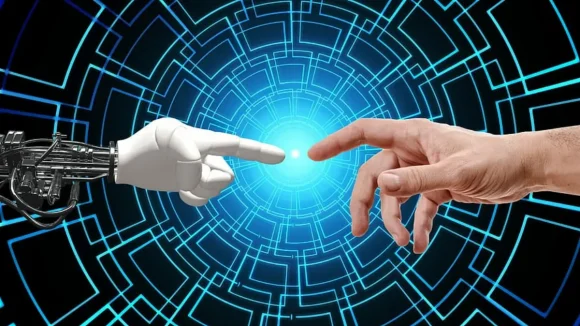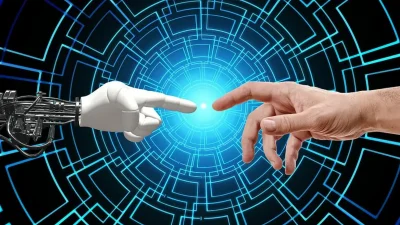In some countries, technology is advancing at a rapid pace, while communities are embracing it with both arms. But in other parts of the world, there seems to be great hesitancy and pessimism.
Charlotte Scott writes in a UK-based teaching website called The Management Centre, why people fear change. “Because they lose control over their role. The larger the change, the more they are going to feel like the change is being done to them.”
In the US delivery robots are being vandalized en route to customers with their orders. Companies now had to come up with plans to lock the robots to protect the items in transport, while others take it too far, by kicking and damaging the property.
Is technology development dependent on location or reception?
“Technology in itself is ideally location-neutral, but the reality is that emerging and advanced technologies for their own sake will always face challenges, not only in new locations or scenarios, but also in new social settings,” said Arthur Goldstuck a technology expert in South Africa, and the CEO of World Wide Worx.
Uber Eats and Serve Robotics are in the process of teaching robots to deliver food orders by 2026. Although Uber Eats is available in most countries, it would be interesting if it will be expanded to all countries at some stage? In South Africa for instance, the infrastructure is more complex than in Europe.
“Food delivery robots are an example of technology for its own sake. It can work in densely populated areas with well-developed road and sidewalk infrastructure, low unemployment, and a culture of automated services,” said Goldstuck. He believes if these elements are not in place it would be counterproductive. “But also damaging to a brand’s image. If such units suffer damage and theft in the USA, where vandalism is not as endemic as, for example, in South Africa or the Philippines, it will be far worse in these countries.”
The question then arises. Which countries are best suited for robot delivery in the last-mile process? “Australian, European, and East Asian cities are probably best-suited for such services, with their combination of well-developed infrastructure and effective policing,” said Goldstuck.
No wonder the next-day delivery option is still seen as a huge achievement among retailers and e-commerce businesses in developing countries. This is while Australians, Europeans, and East Asian countries are racing to improve same-day delivery.
Autonomous product experiments
In San Francisco in the US, self-driving cars are seen on the roads. This month the California Public Utilities Commission made a landmark ruling in favor of robotaxis. Commuters are being driven around in taxis without a driver. There are some in San Francisco who don’t like the robotaxis. The BBC is reporting that those anti-robotaxis believe the city has agreed to a dangerous experiment, putting people’s lives at risk.
Goldstuck believes Silicon Valley and Scandinavia are usually the first places to try out autonomous products like self-driving cars. “Where innovation and experimentation are commonplace, compared to environments where it comes across as bizarre or intrusive,” said Goldstuck.
“Self-driving cars need a combination of cutting-edge regulatory and infrastructural environments, which is unlikely to be found in emerging markets. The use of robots can be a double-edged sword. For example, they have made Ford’s production lines in South Africa more efficient, allowing for increased production, which increased job creation.”
Restaurants’ approach to tech
However, Goldstuck believes the same cannot be said for an experiment with AI in restaurants in these same areas. “On the other hand, if robots were used to replace service people in restaurants and hotels, for example, except where they are gimmicks and novelties, they would be resisted in favor of human help.”
He uses the example of Softbank’s Pepper the Robot, which was used in thousands of fast-food establishments in Japan. “It was expected to become a standard robot waitron globally. However, a combination of high cost and limited functionality resulted in it being discontinued in 2020, serving as an object lesson for wanting to use technology for its own sake or because it seems cool.”
This month White Castle fast food franchise in the US added artificial intelligence bots at its front counter. It will be rolling out SoundHound’s AI-powered voice bots to take customers’ orders in real-time. It is expected to be implemented at over 100 of its restaurants next year.
What works, and what doesn’t?
There are certain limitations when it comes to the rollout of new technologies in certain regions. However, Goldstuck believes it’s not that complicated. There are several fundamental rules and guidelines that should be followed, to make it easier to understand what will work, and what not.
“It must meet a need, it must meet that need seamlessly. It must be affordable, and it must be supported. Often, new technology is released onto the market without adequate support or backup, resulting in customer dissatisfaction or rejection when things go wrong. Because most working people have smartphones nowadays, linking new services seamlessly to these handsets is an essential element of their success.”
With new technology on the horizon in the delivery space, only time will tell how receptive communities would be to the new tech, not feeling threatened and redundant.
About the author
Mia is a multi-award-winning journalist. She has more than 14 years of experience in mainstream media. She's covered many historic moments that happened in Africa and internationally. She has a strong focus on human interest stories, to bring her readers and viewers closer to the topics at hand.











